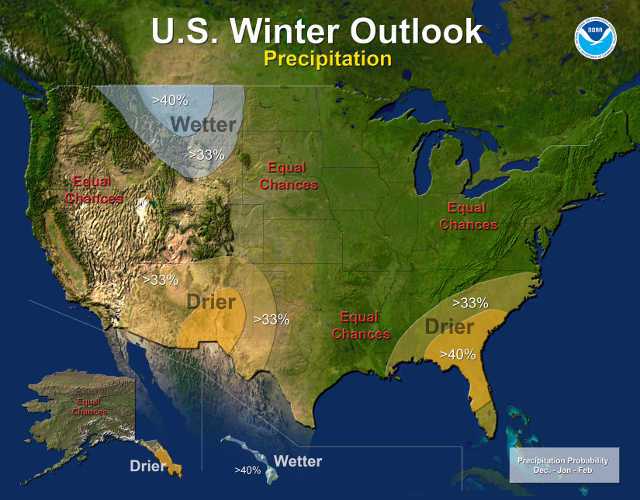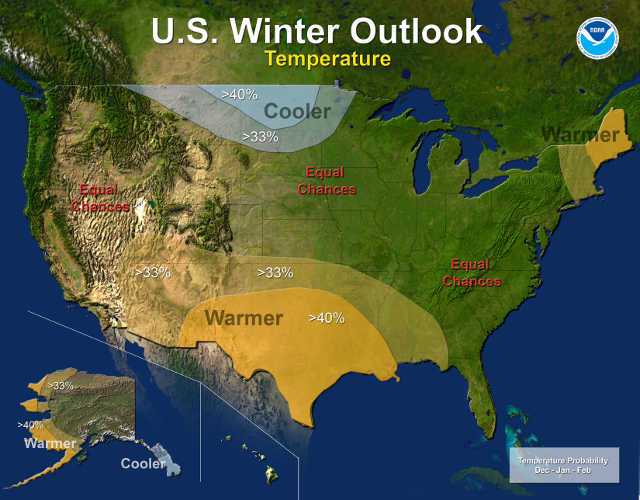NOAA: Drought Likely To Dog Southwest, Southeast U.S. This Winter
Winter is likely to offer little relief to the drought-stricken U.S. Southwest, and drought is likely to develop across parts of the Southeast as below-average precipitation is favored in these areas of the country, according to NOAA’s annual Winter Outlook.
Drought has been an ongoing concern across parts of the Southwest and Texas for nearly three years, and after some relief during the past few months, drought is likely to redevelop during winter.
Sea surface temperatures across the equatorial Pacific have been near average since spring 2012, and forecasters expect that to continue through the winter. This means that neither El Niño nor La Niña is expected to influence the climate during the upcoming winter.
“It’s a challenge to produce a long-term winter forecast without the climate pattern of an El Niño or a La Niña in place out in the Pacific because those climate patterns often strongly influence winter temperature and precipitation here in the United States,” said Mike Halpert, acting director of NOAA’s Climate Prediction Center. “Without this strong seasonal influence, winter weather is often affected by short-term climate patterns, such as the Arctic Oscillation, that are not predictable beyond a week or two. So it’s important to pay attention to your local daily weather forecast throughout the winter.”
The Precipitation Outlook favors:
- Below-average precipitation in the Southwest, Southeast and the Alaskan panhandle.
- Above-average precipitation in the Northern Rockies, particularly over Montana and northern Wyoming and in Hawaii.

Image courtesy of NOAA
The Temperature Outlook favors:
- Below-average temperatures in the Northern Plains and the Alaskan Panhandle.
- Above-average temperatures in the Southwest, the South-Central U.S., parts of the Southeast, New England and western Alaska.

Image courtesy of NOAA
The rest of the country falls into the “equal chance” category, meaning that there is not a strong or reliable enough climate signal in these areas to favor one category over the others, so they have an equal chance for above-, near-, or below-normal temperatures and/or precipitation.
Source: NOAA




